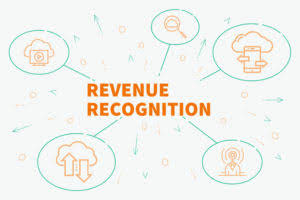Content

Liabilities are shown before the owner’s stake in a balance sheet equation because they must be paid first before the owner’s claims. Current liabilities are those that must be offset within one year, while long-term liabilities can take more than one year. However, due to the fact that accounting is kept on a historical basis, the equity is typically not the net worth of the organization.

Accounts within this segment are listed from top to bottom in order of their liquidity. They are divided into current assets, which can be converted to cash in one year or less; and non-current or long-term assets, which cannot. As noted above, you can find information about assets, liabilities, and shareholder equity on a company’s balance sheet. This means that the balance sheet should always balance, hence the name.
Balance Sheet Ratios Explanation With Examples FAQs
With the accounting equation, you can better manage your business’s finances and evaluate your business transactions to determine whether they’re accurately reported. If both ledgers of your balance sheet don’t match, there may be an error. A balance sheet equation will always be in balance because every accounting entry will always have an impact on assets as well as liabilities. To help you keep your finances in https://accounting-services.net/the-ultimate-guide-to-bookkeeping-for-independent/ order and organized, you can look at financial statements, like your balance sheet. Let us give you the rundown on the balance sheet definition, the components of the financial statement, and how you can use it to keep your books in a row. Shareholders’ equity refers generally to the net worth of a company, and reflects the amount of money that would be left over if all assets were sold and liabilities paid.
- Long-term liabilities are usually owed to lending institutions and include notes payable and possibly unearned revenue.
- Liabilities include debt financing and other obligations, including accounts payable, accrued payroll, benefits, and taxes, lease obligations, and deferred revenue.
- To do this, you’ll need to add liabilities and shareholders’ equity together.
- The bottom portion of the income statement reports the effects of events that are outside the usual flow of activities.
Businesses compute Days Receivable Outstanding (DRO) and Days Payable Outstanding (DPO), which relate to accounts receivable and accounts payable turnover. The net profit (after tax) of a corporation is $150,000 and its fixed interest on long-term borrowing is $20,000. Shareholders’ funds include equity, preference share capital, profits or losses, reserves, and surplus.
What Is A Balance Sheet Equation?
Owners/ shareholders equity refers to the amount of money invested by shareholders or an owner into a business. Equity mostly shows the amount of money contributed Understanding the Cost of Bookkeeping for Small Businesses by the owner or shareholders for a stake in the company. Prepaid expenses includes any prepayment that is expected to be used within one year.
For example, a business balance sheet reports $250,000 in assets, $150,000 in liabilities, and $100,000 in owner’s equity. The creditors have a claim of $150,000 against the company’s $250,000 in assets. Once the debts are paid off, the owner can claim their equity of $100,000.
Accounting formulas for businesses
The balance sheet is one of the key elements in the financial statements, of which the other documents are the income statement and the statement of cash flows. You can find a company’s assets, liabilities, and equity on a few key financial statements, including the balance sheet and the income statement. These financial statements give a quick overview of the company’s financial position.
What is the equation to balance a balance sheet?
The Balance Sheet Equation. The information found in a balance sheet will most often be organized according to the following equation: Assets = Liabilities + Owners' Equity. A balance sheet should always balance. Assets must always equal liabilities plus owners' equity.
The return on equity ratio shows the ratio of income to shareholder’s equity. If they have $50 million in current assets and $50 million in current debt, the current ratio is 1. If they have $8 million in current assets and $10 million in current debt, the current ratio is 0.8.
What’s Included in an Income Statement?
Regularly analyzing the financial position of a business is vital to keep an organization on track. And the balance sheet is one of the most important financial statements for analysis, because it provides a snapshot of your company’s net worth for a specific time. If you’re looking at a company’s balance sheet and find that the current ratio is much higher than 2, that could be cause for concern (and even more so if it’s 3 or higher).
